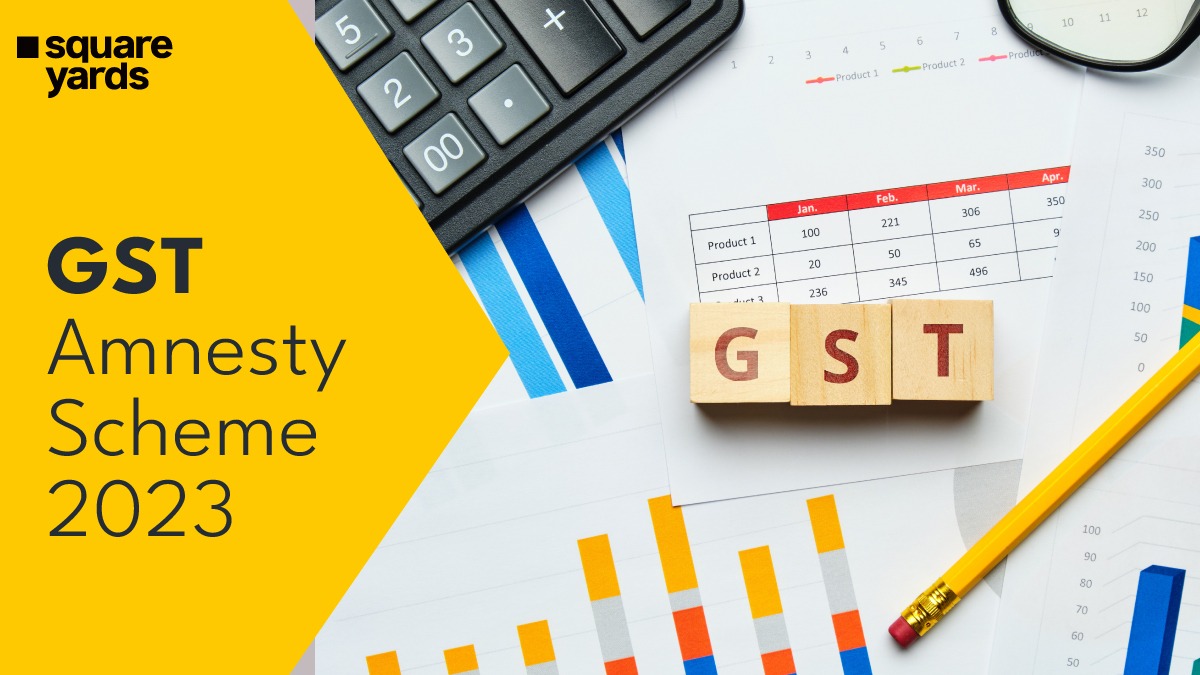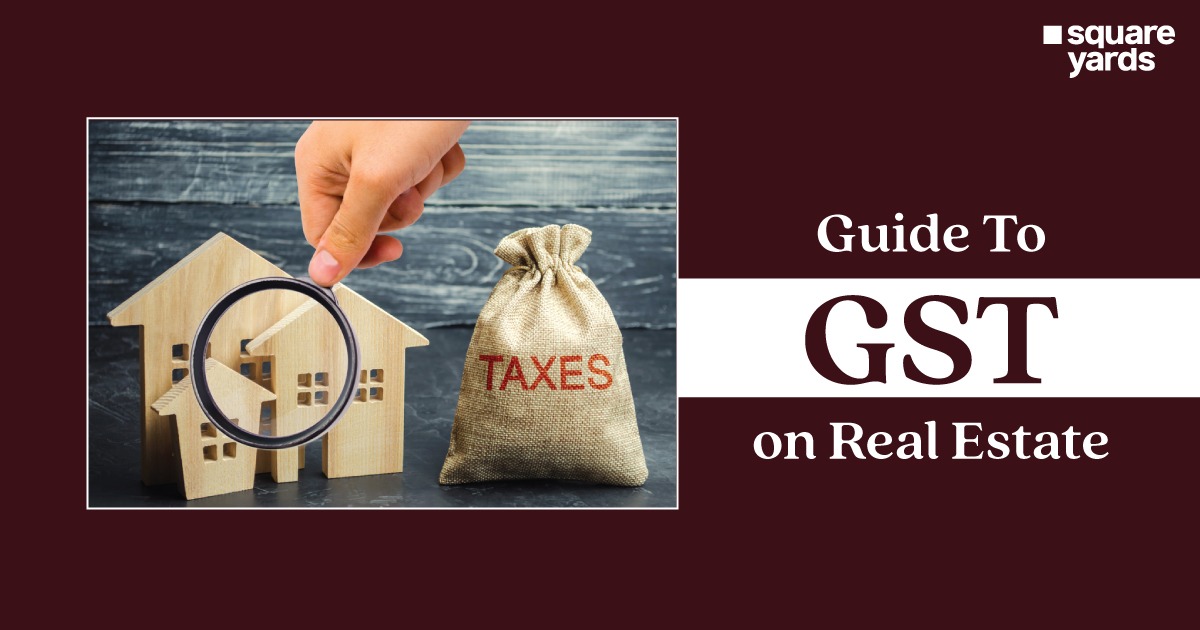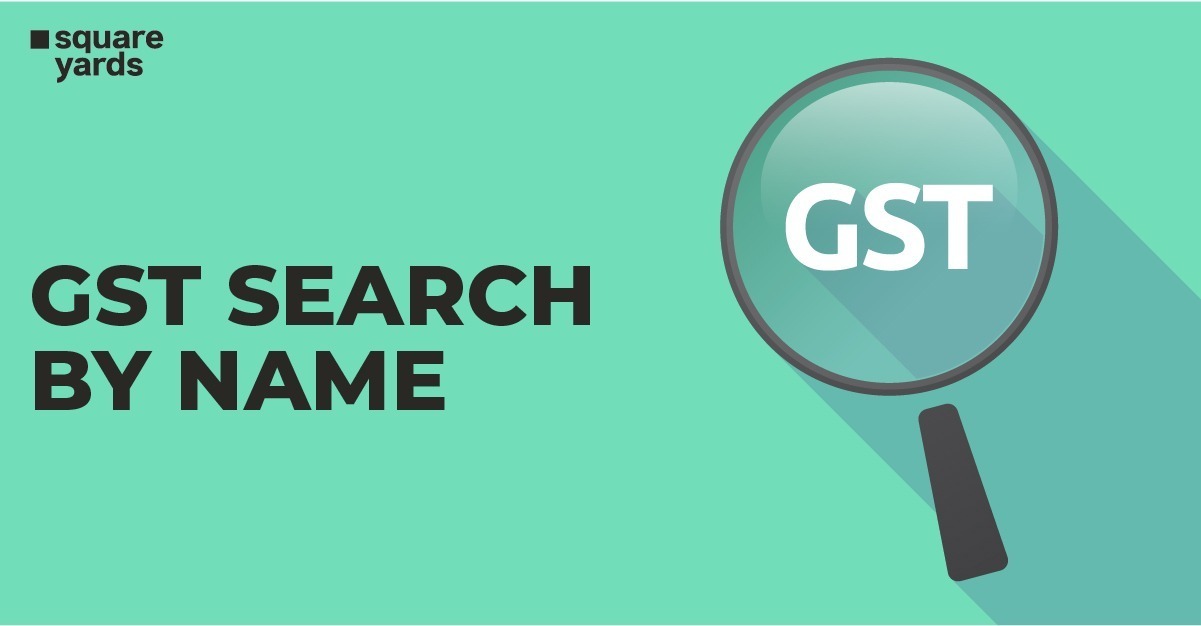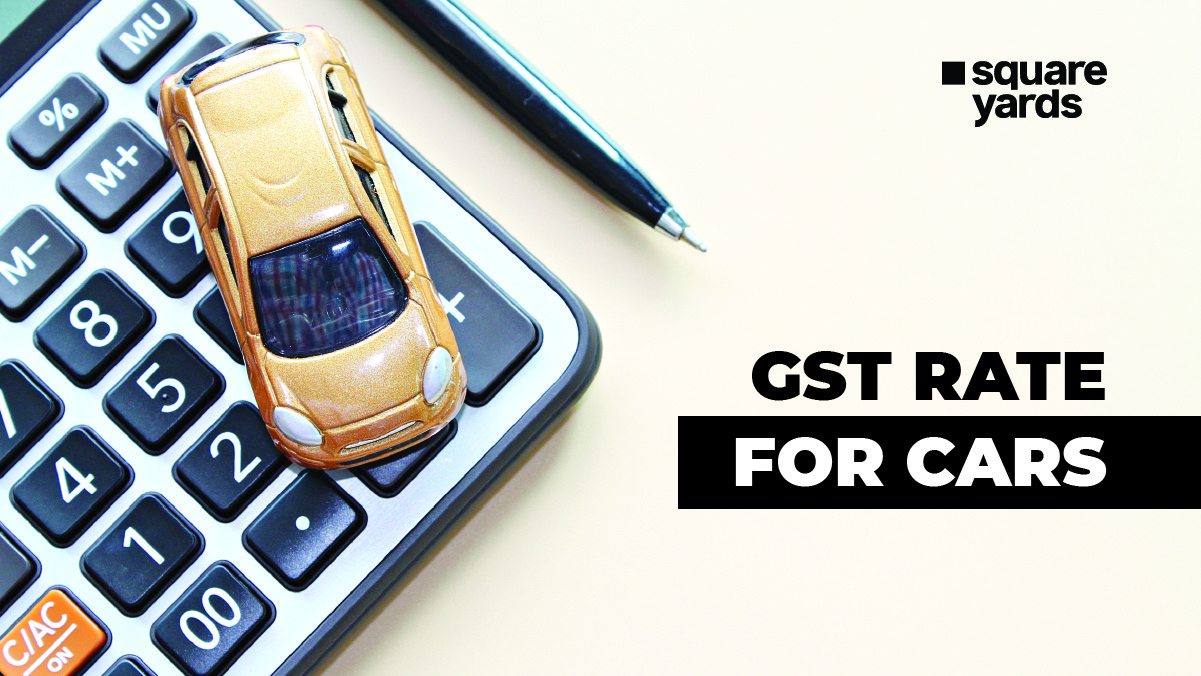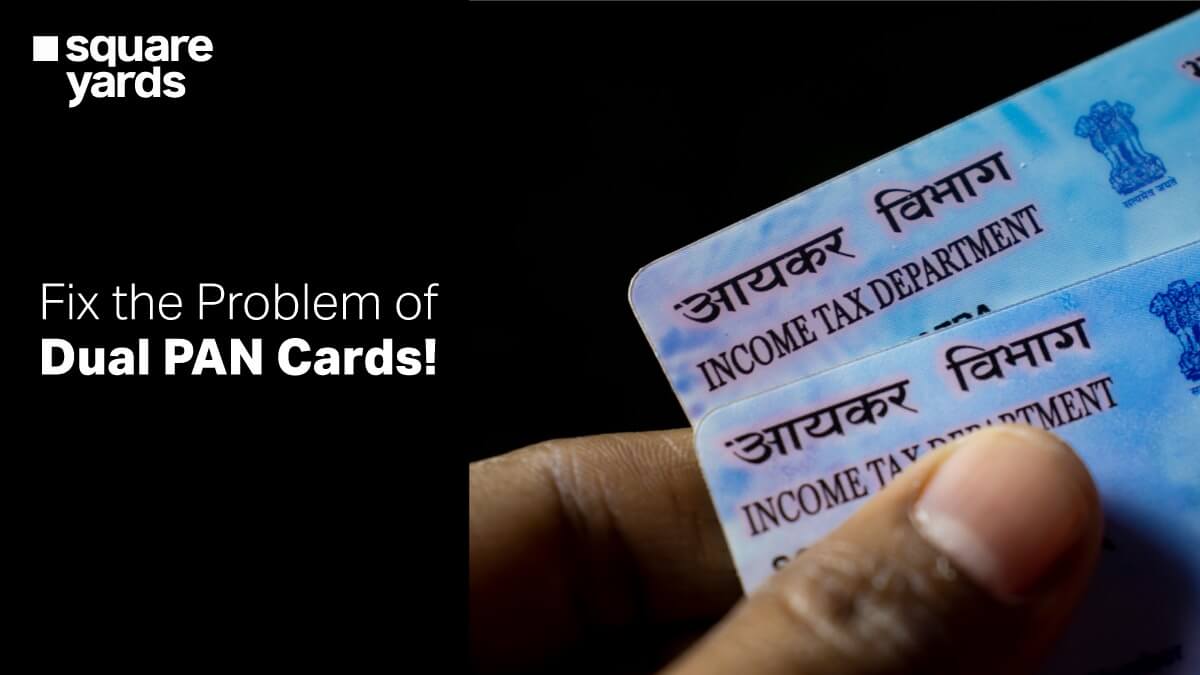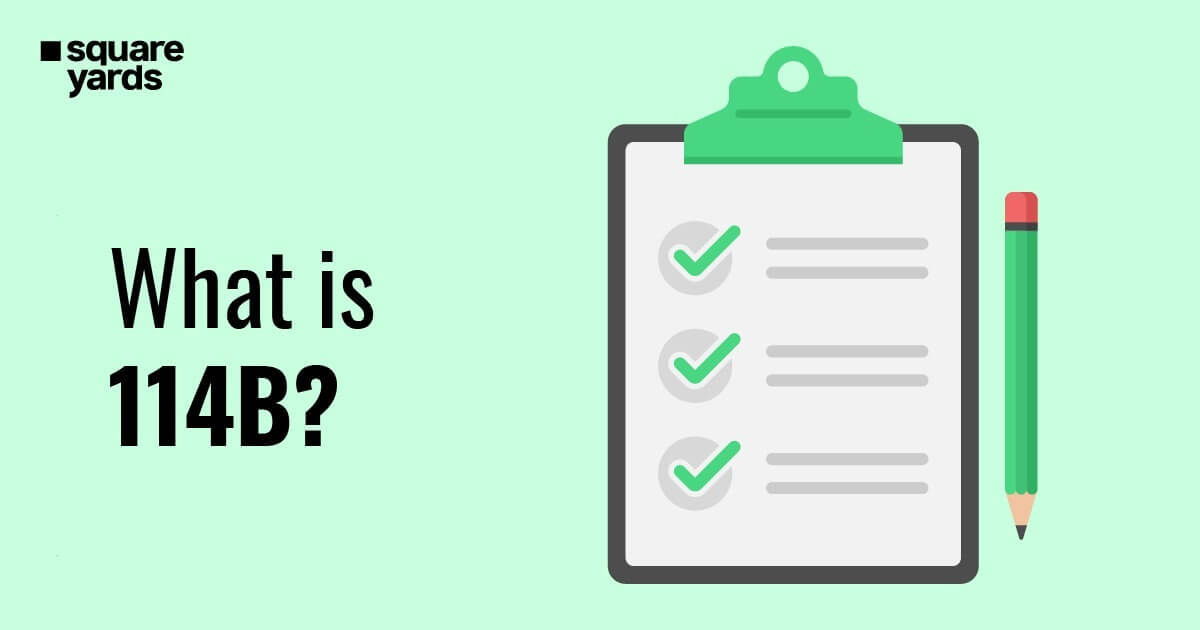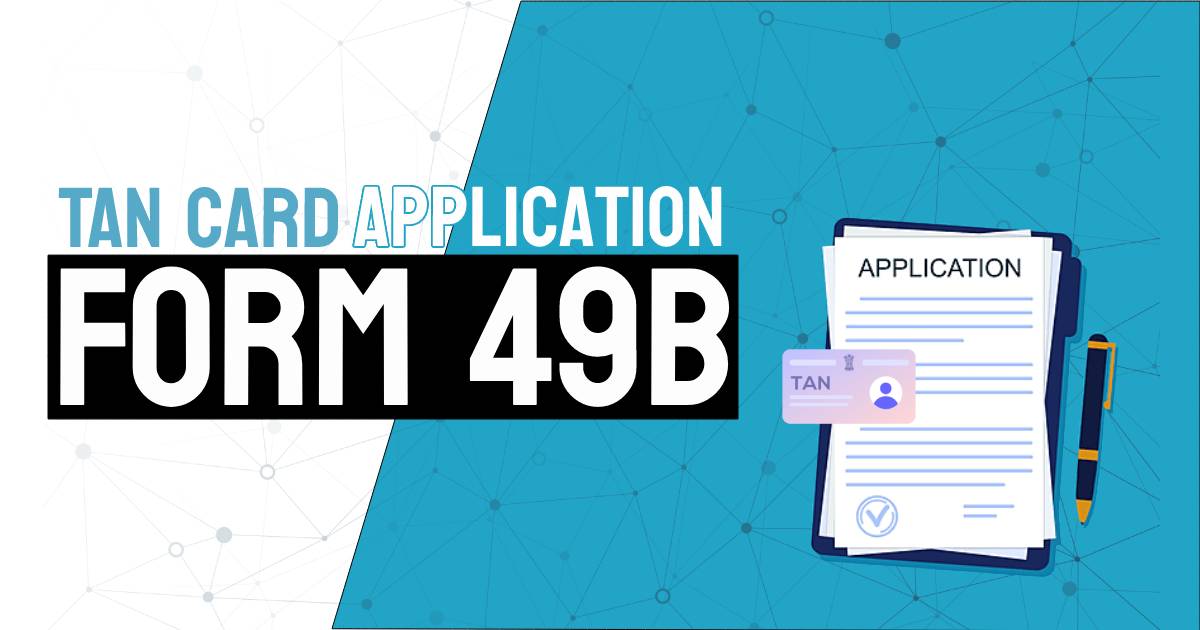Income tax is a type of direct tax levied on the working citizens by the Government of India. The Income Tax Act of 1961 grants the Central Government the authority to regulate and collect such tax, based on the Union Budget.
As earning individuals, firms and associations, we are well aware that we have to pay income tax to the Indian Government every year. But there is certain information that is not always clear to us. And because of this reason, unnecessary errors occur while filing ITR. Missed dates, wrong information, inability to receive refunds are some common issues we as taxpayers go through at one time or the other.
So, in this blog, let’s take a deep dive into the concept of income tax and all its associated terms. We will also walk you through the various income tax laws, tax-saving instruments, and more so that you are well aware of income tax and the various rules and laws around it.
Table of contents
- What is Income Tax?
- About the Income Tax Department of India
- Taxpayers and Income Tax Slabs
- What is Advance Tax?
- Income Tax Return Filing
- E-filing Income Tax Returns
- Income Tax Calculation
- 5 Major Income Tax Saving Investments
- What are the 11 Income Tax Deduction Sections?
- Important Income Tax Dates for Financial Year 2020-21
- What is the Income Tax Collection Process?
- Income Tax Payment Details
- Income Tax Refund 2020-21
- Frequently Asked Questions (FAQs)
What is Income Tax?
To put it simply, income tax can be defined as a tax charged on the annual earnings of any eligible citizen of the country. The amount of tax charged from each taxpayer depends on the income earned by the individual over a financial year. The calculation of tax applicable is done on the prevailing tax slabs of that particular financial year.
Income tax is one of the main sources of revenue for the government, which is further used for developing infrastructure, education, providing healthcare facilities, subsidies to farmers, and other welfare schemes.
Who Needs to Pay Income Tax?
The Income Tax Act of 1961 has classified taxpayers into different categories to apply different tax rates for different types of individuals. The taxpayers can be broadly drafted into the following categories:
- Individuals
- Body of Individuals
- Hindu Undivided Family (HUF)
- Association of Persons
- Companies
- Local Authorities
Individuals are also classified into residents and non-residents. Resident individuals are taxed on their global income in India. This means that they have to pay income tax on the income earned in India as well as overseas.
On the other hand, non-resident individuals are required to pay income tax only on the income earned in India. The resident status is determined for every fiscal year based on an individual’s tenure in the country.
For tax purposes, resident taxpayers are also classified into the following types:
- Individuals less than 60 years of age.
- Individuals above 60 years of age but less than 80 years.
- Individuals over the age of 80.
What are the Different Types of Income?
For the purpose of simple classification and categorization, the Income Tax Department has divided the income into 5 different categories as follows:
| Type of Income | Nature of Income |
| Income from Salary | Any income from salary or pension received. |
| Income from Business and Profession | Any income accrued by self-employed people, freelancers, businesses, contractors and professionals like insurance agents, lawyers, doctors, chartered accountants, etc. |
| Income from Capital Gains | Income from sale of assets like shares, mutual funds, property, etc. |
| Income from House Property | Income earned from renting out property. |
| Income from Other Sources | Interest on savings account, FD, winning lotteries, etc. |
About the Income Tax Department of India
The Income Tax Department of India is a government agency responsible for income tax regulation and collection. It is a subsidiary of the Department of Revenue under the Finance Ministry.
The IT department is headed by the Central Board of Direct Taxes (CBDT). The main responsibility of the IT department is to enforce the various direct tax laws, such as income tax laws. The Income Tax Act of 1961 has provisions to empower the Income Tax Department to levy income tax on any eligible individual/entity.
What is the Income Tax Act?
The Income Tax Act of India came into effect in 1961. It lists all the rules, regulations, and terms related to income tax. The Act was introduced to consolidate and integrate these rules into the country.
The Income Tax Act is composed of 23 Chapters, 298 Sections, and further sub-sections. Each of these chapters and sections is designed to deal with the different aspects of taxation. When the Government of India presents a Budget for every financial year in February, it also introduces amendments to the Income Tax Act.
Let’s take a detailed look at the different Chapters of the Income Tax Act to understand them better.
| Chapter | Details of the Chapter |
| Chapter 1 | Provides a basic introduction to the concept of income tax. |
| Chapter 2 | Details the extent and commencement of the Income Tax Act. |
| Chapter 3 | Lays down the details regarding levying of income tax, dividend income, income received from working overseas, and the scope of total income. |
| Chapter 4 | Includes all those types of income that are not considered while calculating the total income, like income received from institutions, properties, trust, etc. |
| Chapter 5 | Elaborates on those incomes that are partially used to calculate the income of the assessee, like income from house property, capital gains, businesses, etc. |
| Chapter 6 | Deals with the transfer of income when there is no actual transfer of assets. |
| Chapter 7 | Talks about the inapplicable deductions of certain types of incomes and payments. |
| Chapter 8 | Provides details about rebates and shares of a member of an association or body. |
| Chapter 9 | Elaborates on the relief and rebates in income tax. |
| Chapter 10 | Talks about all the provisions of the Act in which income tax is not applicable. This also has information regarding the taxation deals with other countries. |
| Chapter 10A | List downs the anti-avoidance rules and regulations. |
| Chapter 12 | Details how an income tax amount is determined for special cases. |
| Chapter 12 A | Lists the provisions for income received by Non-resident Indians. Some examples under this include provident funds, capital gains, short-term capital gains, etc. It also contains Sections 110 through Section 115BBE that incorporate the different types of taxes applicable on income from special cases like royalties, foriegn currency units, dividends, etc. |
| Chapter 12B | Contains sections 115J through 115JF and talks about the special provisions for taxation of certain companies. |
| Chapter 12BB | Details the taxation process associated with the conversion of a foreign company to an Indian subsidiary. |
| Chapter 12D | Details the process of taxation for the profit earned by domestic companies. This also illustrates the process of taxation when the company defaults on the payments, along with the applicable interest on the non-payment of tax. |
| Chapter 12DA | Lays down tax regulations and guidelines for distributed income of a company. |
| Chapter 12E | Lays down the taxation rules for distributed income of unit holders. |
| Chapter 12F | Describes taxation rules earned from venture capital funds or venture capital companies. |
| Chapter 12G | Lists rules on the taxation of shipping companies. |
| Chapter 13 | Contains all the information about the income tax authorities, including appointment, control, jurisdiction, powers, and disclosure of other information. |
| Chapter 14 | Lists Sections 139 to 152 detailing the process for return filing, obtaining PAN, accounting methods, and online returns filing. This also has information on the intimation of loss, amendments, rectification of errors, and other such related matters. |
| Chapter 14A | Lists down the procedure for avoiding repeat appeals like the ones which are pending in the High Court or Supreme Court. |
| Chapter 15 | Details all the provisions, liabilities, tax recovery from private companies and non-resident Indians. |
| Chapter 16 | Explains the procedure of tax assessment for firms and also deals with amendments in the constitution, adoption, and the dissolution process. |
| Chapter 17 | Mentions the rules and clauses of the recovery and collection of income tax and contains information about the interest applicable on late income tax payment or in the case of tax recovery. |
| Chapter 18 | Pertains to the income tax relief provided to companies in lieu of paying out dividends to shareholders. This also contains details of the relief applicable for companies involved in charitable initiatives. |
| Chapter 19 | Deals with the income tax refunds for cases where extra tax has been paid to the income tax department. It also details the eligibility criteria regarding tax refunds and the interest on IT returns when no claim has been made. The aspects of such cases are covered through Sections 237 to 245 in this chapter. |
| Chapter 19A | Elaborates on the settlement of cases. This is covered under Sections 245A to 245L in this chapter. This details all the aspects of settlement such as procedure, application, recovery of amount, abatement of proceedings, etc. |
| Chapter 19B | Holds domain on all cases of advance ruling and includes the procedure, application, authority, and other such related factors. These are dictated from Sections 245N to 245V. |
| Chapter 20 | Deals with the various appeals made to the commissioner, deputy commissioner, High Court, and the Supreme Court. |
| Chapter 20A | Talks about the factors related with the acquisition of immovable properties to restrain cases of tax evasion. Sections 269A to 269S covers all the aspects related to acquisition. |
| Chapter 20B | Details the income tax payment modes of cases where tax evasion correction is required. It also deals with acceptance of deposits and loans for the same and their corresponding payment methods. |
| Chapter 20C | Details all aspects related to the acquisition of immovable properties by the Central Government in case of transfers like vesting of property, restrictions, appropriate authority, and rectification of errors. |
| Chapter 21 | Contains Sections 271 to 275 and lists down charges and penalties applicable for a number of different scenarios. This includes cases of non-disclosure, compliance failure, and tax evasion. |
| Chapter 22 | Includes Sections 275A to 280D and details the offences associated with compliance failures, and other details about the proceeding of the prosecution. |
| Chapter 23 | Comprises Sections 281 to 298 and contains all the information that cannot be classified under any of the tax chapters mentioned above. It contains information about the generic as well as special cases of the taxation process. |
Schedules of the Income Tax Act
Schedules of the Income Tax Act are amendments and annexures that were included to add those scenarios and topics which were not initially covered. There have been various amendments to the original draft to make the Act more comprehensive and inclusive.
What are the Income Tax Rules?
In 1961, the Government of India introduced the Income Tax Act to administer and govern taxation on income throughout the country. Subsequently, the income tax rules were drafted in 1962 to help enforce and apply the laws stated in the Act. These rules have been drafted within the framework of the Income Tax Act and are under no circumstances allowed to overrule the provisions laid by the Act.
Income Tax Slabs
Under the Indian income tax laws, each taxpayer is charged a different rate according to the tax slab that they come under. On the other hand, companies and firms have a fixed taxation rate charged on the profit earned during a fiscal year. For this reason, the income earned by people is classified into several groups and is called income tax slabs or tax brackets. There is a different rate of taxation for each tax slab.
What are the Existing Tax Slabs?
Under the existing tax structure, there are 3 tax slabs for which income tax is levied. These include 5%, 20%, and 30% tax slabs. The citizens currently have an option to continue with the existing structure and claim various tax deductions like house rent allowance, leave travel allowance, and other related allowances.
Additionally, individuals can also claim deductions for tax-saving investments as dictated under Section 80C to 80U. The following are the income tax slab rates for individuals below the age of 60:
| Income Range | Tax rate | Tax to be paid |
| Up to Rs.2,50,000 | 0 | No tax applicable |
| Rs 2.5 lakhs to Rs 5 lakhs | 5% | 5% of your taxable income |
| Rs 5 lakhs to Rs 10 lakhs | 20% | Rs 12,500 + 20% of the annual income over Rs 5 lakhs |
| Above 10 lakhs | 30% | Rs 1,12,500+ 30% of the annual income over Rs 10 lakhs |
Note: There is a common misconception that income tax is charged on the total income earned by an individual during a financial year. That is just not true. For example, if a person earns Rs 12 lakhs in a financial year, they will not be paying tax on Rs 12 lakhs. Instead, according to the income tax slab rates explained in the above table, they will pay Rs.1,12,500+ Rs.60,000 = Rs. 1,72,500.
What are the New Income Tax Slab Rates?
A new tax regime has come to effect from the financial year 2021-22 for HUFs and individuals. Individuals are free to choose which tax regime they want to continue with. The individual is required to choose the income tax return filing. If the taxpayer wishes to continue with the old regime, they are eligible for all the deductions and exemptions. Given below are the income tax slab rates for the new regime:
| Income Range | Tax Rate |
| Rs 2.5 lakh to Rs 5 lakh | 5% |
| Rs 5 lakh to Rs 7.5 lakh | 10% |
| Rs 7.5 lakh to Rs 10 lakh | 15% |
| Rs 10 lakh to Rs 12.5 lakh | 20% |
| Rs 12.5 lakh to Rs 15 lakh | 25% |
| Above Rs 15 lakh | 30% |
If the taxpayer has opted for the new tax regime, they are not eligible for several deductions and exemptions drafted in the previous tax structure. However, the new tax regime makes provisions for new exemptions and deductions, which are as follows:
- Specially-abled people are eligible for transport allowances.
- Conveyance allowance is applicable in case of expenditures incurred as a part of the job.
- Any remuneration received to compensate for the cost incurred on tour or transfer.
- Daily allowance for meeting the ordinary regular expenses or cost incurred in lieu of absence from a regular place of duty.
Exceptions to the Income Tax Slab
It is important to understand that not all income can be taxed based on tax slabs. One of the exceptions to this rule is capital gains. Income tax applicable on capital gains is based on the type of asset and the amount of time you have had it for.
The holding period is considered to determine if it is a short-term or long-term asset. The holding duration used to determine the nature of assets also varies amongst various assets. Let’s take a look at the holding period, nature of the asset, and taxation rate for the different types of capital assets:
| Capital Asset Type | Holding Tenure | Taxation Rate |
| House Property | Holding over 24 months – Long Term Holding fewer than 24 months – Short Term |
20% depending on slab rate |
| Debt mutual funds | Holding over 36 months – Long Term Holding fewer than 36 months – Short Term |
20% depending on slab rate |
| Equity mutual funds | Holding over 12 months – Long Term Holding fewer than 12 months – Short Term | Usually, exempt. However, gains greater than Rs. 1 lakh are taxable at 10 – 15%. |
| Shares | Holding over 12 months – Long Term Holding fewer than 12 months – Short Term | Exempt. Gains over Rs. 1 lakh is taxable at 10 – 15% |
| Shares (STT unpaid) | Holding over 12 months – Long Term Holding fewer than 12 months – Short Term |
20% as per Slab Rates |
| FMPs | Holding more than 36 months – Long Term Holding less than 36 months – Short Term |
20% depends on slab rate |
What is Advance Tax?
Calculating the tax liability and submitting the payment to authorities before the due date is known as advance tax. The taxpayer is required to pay advance tax when his estimated liability for the fiscal year is more than Rs 10,000. The government has released a list of due dates for the payment of advance tax:
| Due Date | Advance Tax Applicable |
| On or before 15th June | 15% |
| On or before 15th September | 45% |
| On or before 15th December | 75% |
| On or before 15th March | 100% |
Income Tax Return Filing
The first step in income tax return filing online is obtaining your Form 16, as provided by your employer, along with any other investment proof. This can be used to compute your tax liability for the financial year. Further, you can also download the Income Tax preparation software from the official portal. Once you have all the relevant documents ready, you can begin the filing process.
As a taxpayer, you are required to file an IT return for every financial year, using the 7 forms dictated by the income tax department. Based on their income source, these forms can be used by any taxpayer to file returns. All you have to do is select the appropriate form to file taxes.
What are the Income Tax Forms?
Given below are the 7 ITR forms that can be used to file your income tax return:
- ITR-1: This form is meant to be used by resident individuals having income from salary, house property, agriculture (less than Rs 5000), other sources, and with a total income not exceeding Rs.50 lakh.
- ITR-2: It is to be used by Individuals/HUFs who are not proprietors of any business or profession.
- ITR-3: This form is for self-employed individuals/HUFs whose income comes from business gains and profits.
- ITR-4: It is for those individuals/HUFs whose income is less than Rs. 50 lakh and has chosen the presumptive income scheme under Sections 44AD, 44ADA, and 44AE.
- ITR-5: This is for companies like LLPs, Artificial Juridical Person (AJP), AOPs (Association of Persons), BOIs (Body of Individuals), business trusts, Estate of deceased/insolvent, investment funds, etc.
- ITR-6: This form is to be provided by those companies who e-file their ITR without claiming any exemptions under Section 11 of the Income Tax Act.
- ITR-7: This is for any individual or company who files their ITR as a trust, local authority, firm, company, AOP, or AJP, claiming exemptions under Sections 139 (4A), (4B), (4C), or (4D).
E-filing Income Tax Returns
Making it easy for taxpayers, the income tax department has made provisions for e-filing income tax returns online via the income tax e-filing portal. The taxpayer can register and log in to the website to file income tax returns online. This has a quite evident advantage over manually filing your taxes as you won’t have to go through the tons of paperwork and hassle of offline filing.
TDS return, AIR return, and Wealth Tax Return are some of the other filings that can be done on the website. Additionally, you can also use the portal to view your outstanding tax amounts, Form 26AS, CPC refund status, and ITR-V receipt status. The website even has a tool that you can use to calculate the tax demand, thereby eliminating the probability of any error.
Documents Required to E-file Income Tax Returns
Given below is the list of documents that you will be required to submit while e-filing your income tax returns:
- The PAN of the assessee.
- The Aadhaar number of the assessee. (Make sure that the number is linked with the PAN.)
- Bank account details of the assessee.
If you are a salaried employee filing ITR, you will need the documents mentioned below:
- Form 16.
- Rent receipts (If the assessee is claiming HRA deductions)
- Salary slips.
Income Tax Calculation
Income tax calculation is intrinsic for any taxpayer when paying income tax, via which they get to know about the due amount based on the nature of their income. This can either be done manually or by using the online income tax calculator. For the salaried taxpayer, the income from salary is composed of basic pay, transport allowance, house rent allowance (HRA), special allowance, and other such variables.
However, other components of the salary, like reimbursement of telephone bills and leave travel allowance, are exempt from income tax. If you are using your HRA for renting a residence, you are eligible for a tax exemption. Additionally, the new tax structure has also made provisions for a basic tax exemption of up to Rs 50,000.
5 Major Income Tax Saving Investments
Proper tax planning is one of the ways by which you can reduce the amount of tax that you pay. The most widely used way of doing so is by actively engaging in income tax saving investments. This will help greatly in reducing the tax liability. The top 5 Some of the tax-saving investment options are as follows:
- Medical Expenses and Health Insurance
Section 80D of the Income Tax Act makes provisions for the taxpayer to claim deductions in lieu of the cost incurred for health insurance premiums. This deduction can also be claimed for medical expenses for the assessee or immediate family of the assessee.
- Education Loan
According to Section 80E, an income tax deduction can be claimed for the interest paid for an education loan. There is no limit to which this deduction can be claimed and proves as one of the best modes of income tax saving investments.
- Home Loan Deduction
Section 24 of the Income Tax Act states that the taxpayer is eligible to claim a deduction for the interest paid for home loans during the relevant financial year. The extent of the deduction is decided based on whether the house is self-occupied or rented out. Further, Section 80C also makes provision for the taxpayer to claim deductions on the total principal amount.
- Market-Linked Investment Options
Section 80C of the Income Tax Act makes provisions for the individuals to claim tax deductions in lieu of money invested in market-linked investment schemes such as mutual funds, equity-linked savings schemes, Unit Linked Insurance Plans, etc.
- Deduction for Interest Income
The individual can also claim a tax deduction in lieu of the interest received on deposits from banks. According to Section 80TTA, the individual can claim a deduction of up to Rs 10,000.
What are the 11 Income Tax Deduction Sections?
There are 11 income tax deduction sections under the Income Tax Act which offer details on eligible tax deductions for your total tax amount. The details of these deductions have to be mentioned in the relevant ITR form when filing returns. Take a look at the 11 income tax deduction sections below to plan your investment better and save on your income tax.
The deductions mentioned in this section apply to only individuals and HUFs (Hindu Undivided Families). This section allows income tax deductions in lieu of investments like NSC and expenditures, to an extent of Rs 1.5 lakh.
- Section 80CCC
Section 80CCC is for the deductions related to premium payments made to LIC or any other authorized insurance provider. The amount of pension policy issued in the name of the taxpayer should not exceed Rs. 1.5 lakh. The taxpayer is required to make premium payments out of their taxable income.
- Section 80CCD
This income tax deduction section lists the details of the deductions related to the assessee’s and employer’s contribution to the New Pension Scheme. The deduction applicable is equal to the contribution made, assuming it is not more than 10% of the basic salary.
- Section 80D
Section 80D of the Income Tax Act lists deductions related to health insurance premiums. An eligible health insurance scheme can be for the taxpayer and his immediate family, for a limit up to Rs 15000. Further, an additional income tax deduction of Rs. 5,000 is applicable if the insured party is a senior citizen. The total extent of the claimable deductions in this section is up to Rs 2 lakh.
- Section 80DDB
This income tax deduction section details the deductions related to the medical expenses incurred from the treatment of a disease specified in the Income Tax Rules. This can be a treatment for the assessee or any of the immediate family members.
- Section 80E
This section contains the list of deductions related to interest payments made for an education loan.
- Section 80EE
Section 80EE mentions deductions for first-time home-buyers. This is applicable for homeowners when the property value is less than Rs. 40 lakh and the related home loan amount does not exceed Rs. 25 lakh.
- Section 80RRB
Tax exemptions on income received from patents and royalties can be claimed under this income tax deduction section. For patents registered under the Patents Act of 1970, the assessee can save income tax for an amount of up to Rs 3 lakh.
- Section 80TTA
This section talks about tax exemptions applicable for interest earned in a savings account, co-operative societies, or post office investment schemes. Individuals and HUFs are eligible for a deduction on interest income up to Rs 10,000.
- Section 80U
Section 80U comprises details of the flat income tax deductions available for income earned by a disabled taxpayer, provided that the assessee has submitted a disability certificate. Income up to Rs 1 lakh is non-taxable under this section, depending on the nature of the disability.
- Section 24
This income tax deduction section deals with deductions regarding interest payments for a housing loan. In addition to the deductions stated under Sections 80C, 80CCF, and 80D, an amount not exceeding Rs. 2 lakh can be claimed as deductions for the financial year. This is only applicable for the properties occupied by the taxpayer.
Important Income Tax Dates for Financial Year 2021-22
The following are the important income tax dates for FY 2021-22:
| Important Dates | Tasks to be Completed |
| Before January 31 | Individuals are required to submit their proof of investment |
| Before March 31 | Deadline for making any investments under Section 80C of the Income Tax Act, 1961. |
| Before 31 July | This is the last date to file the income tax returns |
| October -November | Last date for certification of tax returns |
What is the Income Tax Collection Process?
The Government of India has three primary income tax collection processes. These include:
- Taxes Deducted at Source (TDS). This is directly deducted from your salary every month.
- Taxes Collected at Source (TCS).
- Voluntary tax payments (made by taxpayers into banks designated for income tax collection.
The Income Tax Department is responsible for the regulation and collection of income tax, expenditure tax, and other such taxes, as passed during the annual budget. The policies and planning of taxes are regulated by the Central Board of Direct Taxes (CBDT).
The CBDT is also in charge of regulating the direct taxation laws in the Income Tax Department. Apart from the tax collection, the Income Tax Department also works towards the prevention of tax evasion.
Income Tax Payment Details
The following are some of the ways that the taxpayer can make the income tax payments:
- Tax Deducted at Source (TDS)
There are specific payments for which tax is deducted at the source by the payer while making the payment. Further, the taxpayer can claim the income tax credit for the TDS amount by adjusting it against the final tax liability.
- Advance Tax Payments
As per the Income Tax Act of 1961, a taxpayer is required to pay tax in advance when the tax liability is estimated to be over Rs. 10,000. The tax authorities have released a list of specified due dates for filing advance tax returns.
- Self-Assessment Tax
As per the annual income, this is the balance tax amount to be paid by the taxpayer. The calculation of this balance is done after deducting any TDS and advance tax payments.
- E-Payment Facility
Taxpayers can use the TIN NSDL website to pay advance tax and self-assessment tax. The taxpayer is required to have an active net banking facility set up with an authorized bank.
Income Tax Refund AY 2022-23
If the taxpayer has paid any amount above the actual tax liability, they are eligible to claim an income tax refund for the same amount. For instance, if the TDS liability for a financial year was Rs. 50,000 and the employer deducts Rs. 60,000 instead, a refund can be claimed for the additional Rs. 10,000 deducted.
An income tax refund can also be claimed if the taxpayer forgets to declare any tax-saving investments during the financial year. One can check the income tax refund status on the official portal.
You May Also Read:
Frequently Asked Questions (FAQs)
When is it mandatory to file an income tax return?
Companies and firms are required to file an ITR for every financial year. On the other hand, HUFs, AOPs, and BOIs are required to file income tax returns if the income for a financial year exceeds Rs 2.5 lakh. The minimum limit is Rs. 3 lakh in the case of senior citizens.
Why is Income Tax collected?
Income tax is collected by the government for numerous reasons. One of the main uses of income tax is paying the salaries of state and central government employees. The collection of income tax is also the source of income for the government which is used for the development of the nation.
Can I file an income tax return even if I’m below taxable income slabs?
Yes, you can voluntarily file an income tax return even if you fall below the taxation threshold.
What documents need to be enclosed along with an income tax return filing?
You are not required to enclose any documents along with your ITR filing. However, you are advised to have any relevant documents ready as and when required by the income tax authorities.
Should I declare all of my income for a financial year even if it is exempt from taxation?
Yes, you are required to declare all of your income for the financial year, including exempt income.
Should I E-verify to receive the Income Tax Refund?
The verification of ITR filed is done electronically and is a compulsory step to complete the process of return filing. The taxpayer is required to verify the income tax returns within the stipulated time frame as released by the authorities.
Where can a taxpayer invest to save income tax?
Various tax-saving investment options can be used by the taxpayer to reduce the total tax amount. Some of the most commonly used instruments are the National Pension Scheme, ELSS schemes, PPF, etc.
Do I have to pay income tax if I earn income in cash?
Yes, you will have to pay income tax even if the income is earned in cash. However, if the income source is unspecified, it is taxed at a rate of 60% and is exempt from all other deductions and benefits. There is also an additional surcharge of 25%, along with a 6% penalty.
How much income is tax-exempt in India?
Currently, there are 2 different tax regimes in effect in India which are used to file income tax returns. However, the taxation slab for the old and new regimes stays the same. In both cases, the taxation slab starts at Rs. 2.5 lakh.
Is the due date for income tax return filing the same for all taxpayers?
All taxpayers who are not required to have their accounts audited need to submit their ITR before July 31. Working partners of a firm, individuals and companies whose accounts must be audited are required to submit the tax filings on or before September 30.



















